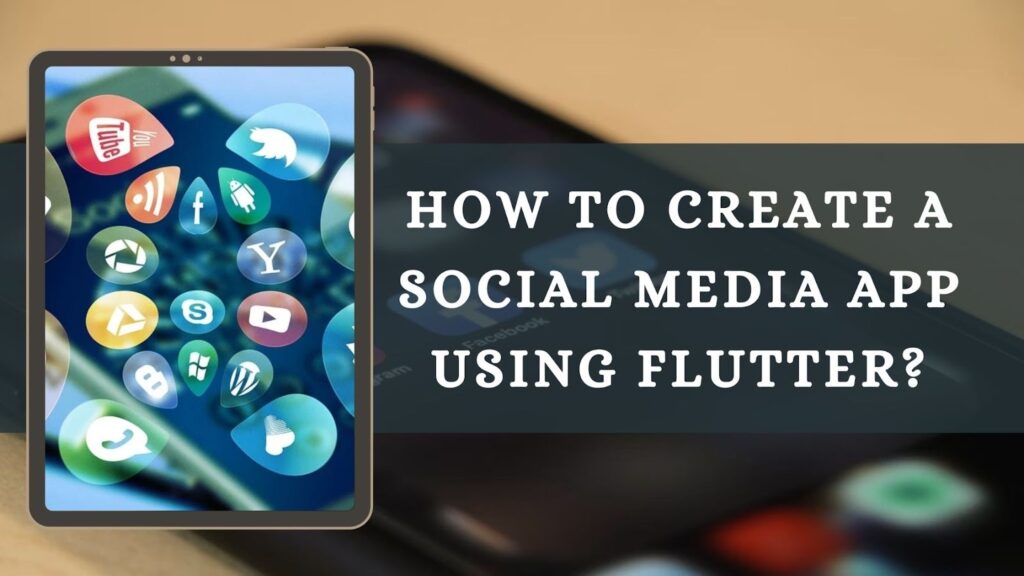What is Flutter?
Flutter has been there since Google first launched it in 2015, but the excitement around it has just recently become greater. It’s a cross-platform tool that uses a modern, reactive architecture to create Android and iOS apps from a single code base. Flutter app development services are written in Dart, which is a simple object-oriented programming language. Flutter’s design is built around widgets.
The complete UI is made up of several widgets, each of which defines a structural element (such as a button or menu), a stylistic element (such as a font or color scheme), a layout aspect (such as padding), and so on. Flutter does not employ OEM widgets, instead offering its ready-to-use widgets that appear to be native to Android (Material Design) or iOS apps (Cupertino). It is also possible to make your widgets.

Benefits of Flutter
High Productivity
Since Flutter is cross-platform, you may utilise the same code base for both iOS and Android apps. You will surely save time and money as a result of this.
Great Performance
There’s no need to use OEM widgets because Dart compiles to native code and Flutter supplies its own. As a result, there will be less contact between the app and the platform.
Fast and Simple Development
One of Flutter’s most popular features is hot reload, which allows you to see changes to the code in real time on emulators, simulators, and hardware. The updated code is reloaded in less than a second while the program is operating, eliminating the need for a restart. This is excellent for both developing UIs and adding functionality, as well as fixing errors. In terms of simplicity, Flutter claims that programming with it is so simple that it doesn’t require any prior programming knowledge: “Experience with object-oriented languages is undoubtedly useful, but even non-programmers have developed Flutter apps!” There is only one way to find out if this is correct.
Compatibility
Because widgets are part of the program rather than the platform, you’ll probably have fewer or no compatibility concerns across OS versions. Hence less time is spent in testing.
Open-source
Flutter and Dart are both open-source and free to use, with extensive documentation and community support to help you with any issues you may have.
Social Media App Development
How to Create a Social Media App?
1. Connection with existing social networks
The fewer steps between the user and full application interaction, the better. They’ve already left their information in plenty of other social media apps; there’s no reason to make them do it again. It’s preferable to use a “Connect to” or “Sign in using” button on one of the existing applications to narrow the path to the new experience.
2. Opportunities for self-expression
Each user wishes to stand out and demonstrate their creativity, exceptionality, and originality to the rest of the world. Customising profile images, backgrounds, nicknames, and other features of the social media app should all help with this.
3. Creating a network
Only if there are friends or interesting people on a social network does it make sense to the user. As a result, social media app developers must use a perfect friend network algorithm and a system that allows users to add friends with a single click.
4. Organisation of the news feed
Almost every social media platform requires the use of news sources. For good reason, content wins every time. Users generate a massive amount of data on their own: logs, statuses, video, audio, and photo submissions. They also share other people’s material. It enables you to stand up for yourself and communicate your viewpoint.
5. Interaction with other services
You must design a mechanism to integrate existing services into your network to deliver a better user experience for your clients while dealing with the platform. Users do not have to pick between multiple services because they are all connected in this way.
6. Private communication
There are always topics that need to be discussed in secret, no matter how wonderful the public user interaction experience is. Built-in facilities for safe private communication must be available on social media platforms. As a result, your users will spend more time on your app rather than on third-party resources.
Conclusion:
Since Flutter can fulfil all the requirements of any social media application development it is recommended the most among all other platforms. Also, it is recommended to hire any social media mobile app development company to make it easy for the development of any social media. Those companies know what exactly is required and trending in the virtual world or how people will be attracted to a new social media platform.

As the editor of the blog, She curate insightful content that sparks curiosity and fosters learning. With a passion for storytelling and a keen eye for detail, she strive to bring diverse perspectives and engaging narratives to readers, ensuring every piece informs, inspires, and enriches.









